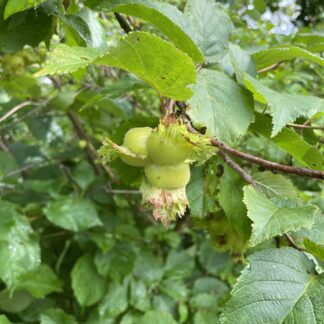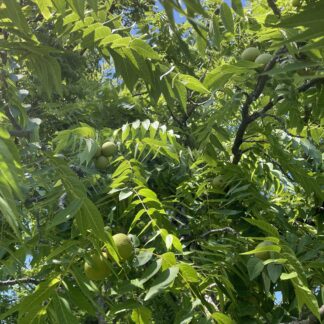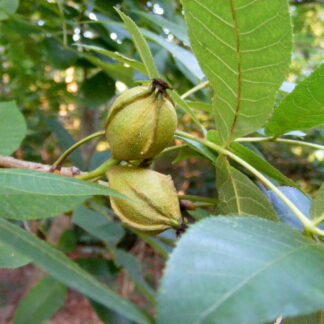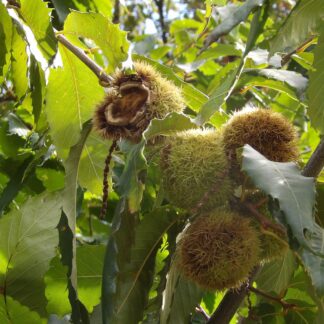Description
American chestnut (known by us as Turtle Island chestnut) is a relative who has been driven to the point of “functional extinction,” where they do not successfully reproduce on their own without human intervention. A fungus known as chestnut blight was introduced to the continent in 1904 by settlers looking to start Japanese chestnut plantations. The chestnut species native to East Asia can survive an infection of chestnut blight, but the majority of Turtle Island chestnuts cannot. They did not evolve alongside this fungus, and thus have no relationship of coexistence or resistance, and most are girdled by the infection. Their roots can live on, and they will periodically send up new shoots, but they rarely reach maturity before being felled once more. Even if they do reach the age of nut production, there is usually not a neighboring chestnut tree to pollinate them.
The fungus alone did not kill the estimated four billion Turtle Island chestnut trees who once filled the forests; once news had spread of the blight, settlers poured into the forests to cut down every chestnut they could find. They specifically wanted the healthy trees, as their wood was not yet marred by fungal infection. The trees who were resistant to blight, those whose pollen could spread that resistance far and wide, were killed. We’ll never know the lineages that were lost in the race to the bottom, but we can plant the seeds of remnant trees who somehow escaped both infection and greed (usually found on the west coast of the continent)!
Chestnuts are famous for the abundance of they provide, and these are no different. You’ll need at least two for pollination, though they can be pollinated by nonnative chestnuts as well- if you’re growing for true ecological restoration purposes, you’ll need to ensure there are no neighbors growing chestnuts from elsewhere. These seeds are not guaranteed to carry blight resistance, as the parents live in an area where the blight cannot survive long-term, but it is the possibility of blight resistance that propels us to plant and spread these amazing seedlings. The more genetic diversity there is, the higher the likelihood that one day there will be a chestnut who can firmly resist the fungus- but that only happens if people start planting them.
They prefer acidic and well-draining soil, and need as much sun as you can give them. If they avoid the blight they can grow up to 100ft tall.





